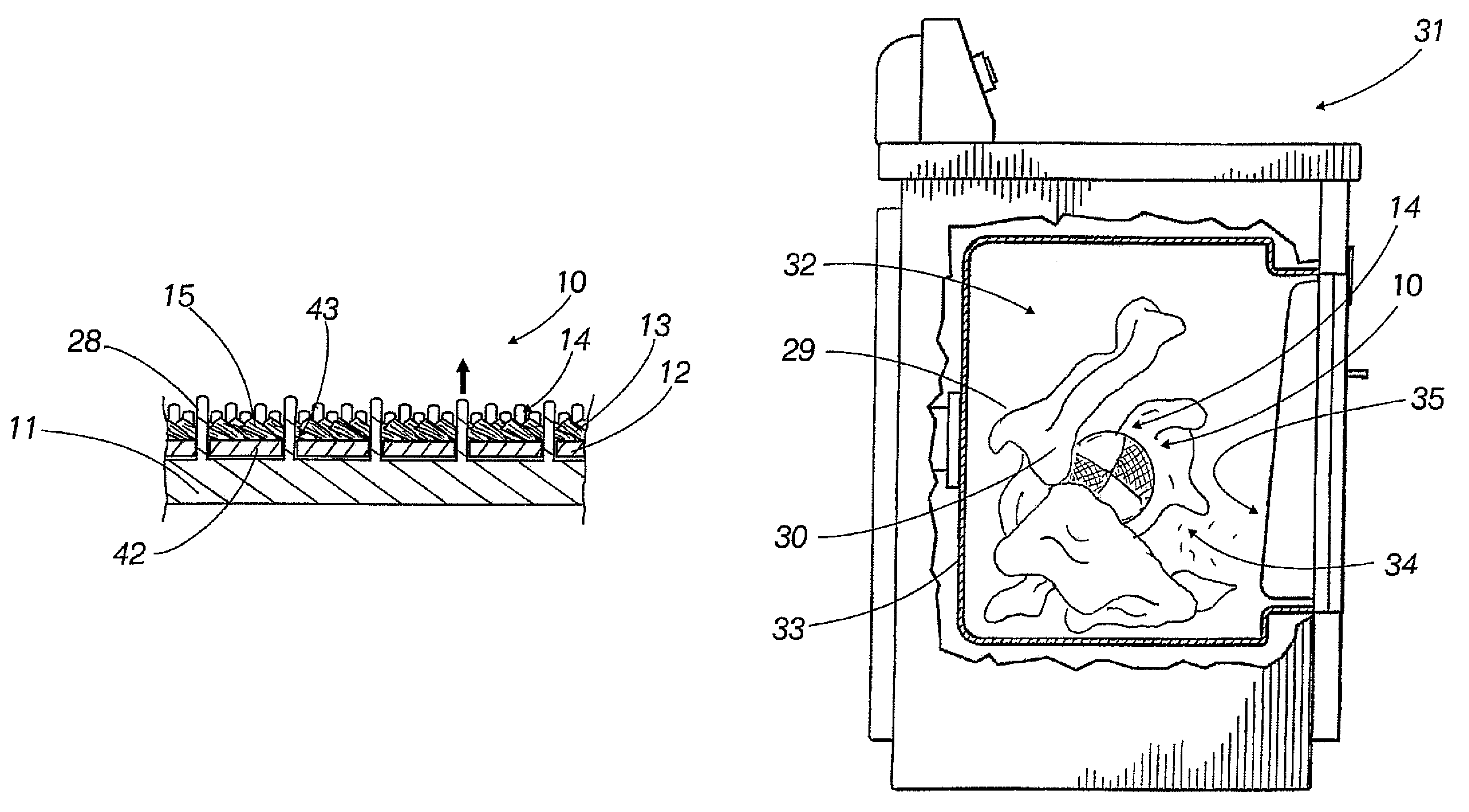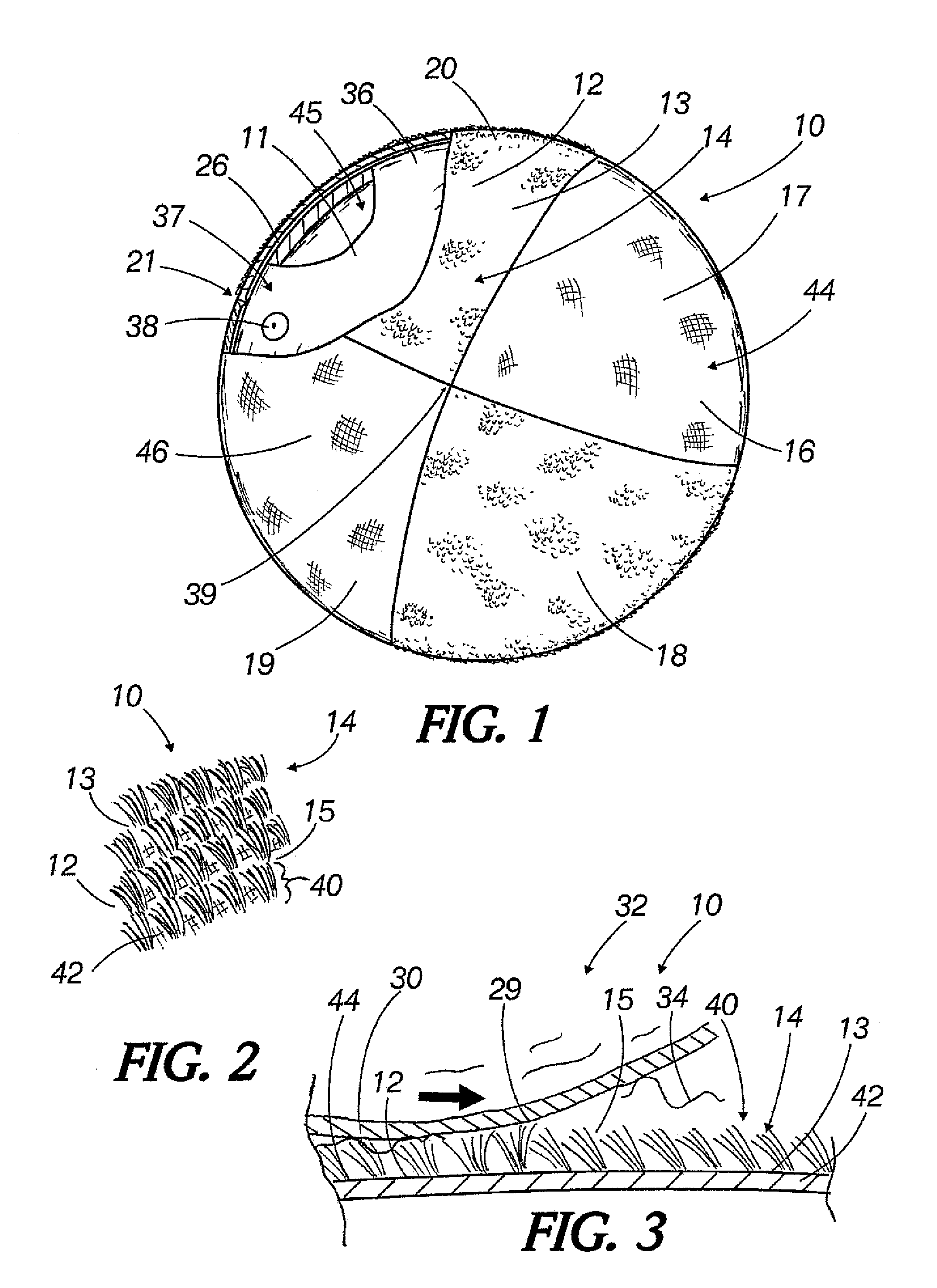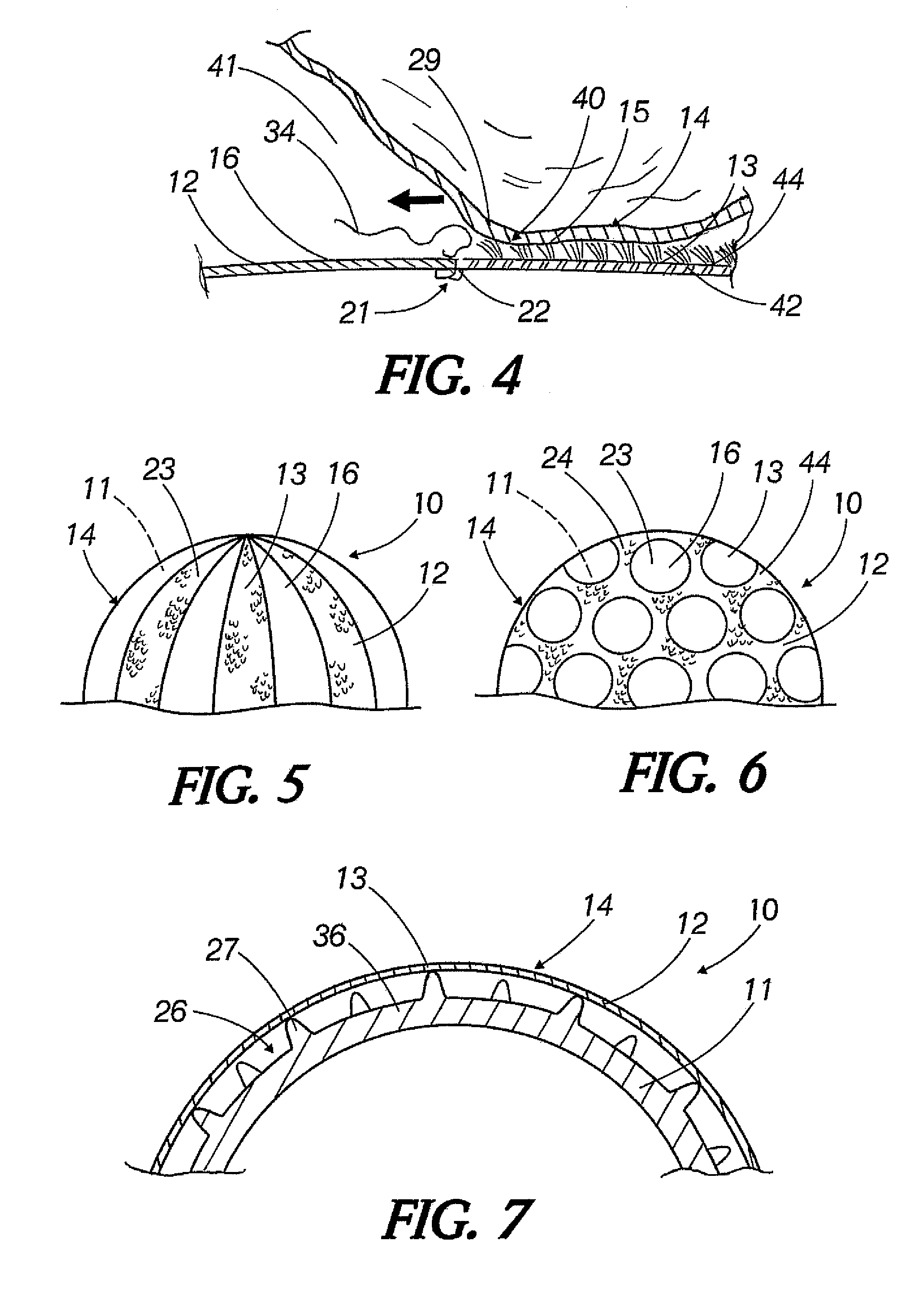Laundering aid removing adherent matter from fabric articles
a technology of fabric articles and adhesives, applied in the direction of laundry driers, drying solid materials without heat, textiles and paper, etc., can solve the problems of compounded problem of adherent animal hair and other fine matter, difficult to remove hair or fur from pet cats, dogs, other mammals, etc., to facilitate the dislodging of adherent matter, enhance the action of the laundering aid, and reduce static cling
- Summary
- Abstract
- Description
- Claims
- Application Information
AI Technical Summary
Benefits of technology
Problems solved by technology
Method used
Image
Examples
Embodiment Construction
[0022]The following detailed description and appended drawings describe and illustrate various exemplary embodiments of the invention. The description and drawings serve to enable one skilled in the art to make and use the invention. The materials, methods, and examples disclosed herein are illustrative only and not intended to be limiting. Unless otherwise defined, all technical terms used herein have the same meaning as commonly understood by one of ordinary skill in the art to which this invention pertains. In case of conflict, the present document, including definitions, will control. Preferred methods and materials are described below, although methods and materials similar or equivalent to those described herein can be used in the practice or testing of the present invention.
[0023]The term “adherent”, when referring to the mechanism by which hair, fur, lint, and other fine matter engages the surface of fabric articles (such as clothing) encompasses any action by which such mat...
PUM
 Login to View More
Login to View More Abstract
Description
Claims
Application Information
 Login to View More
Login to View More - R&D
- Intellectual Property
- Life Sciences
- Materials
- Tech Scout
- Unparalleled Data Quality
- Higher Quality Content
- 60% Fewer Hallucinations
Browse by: Latest US Patents, China's latest patents, Technical Efficacy Thesaurus, Application Domain, Technology Topic, Popular Technical Reports.
© 2025 PatSnap. All rights reserved.Legal|Privacy policy|Modern Slavery Act Transparency Statement|Sitemap|About US| Contact US: help@patsnap.com



